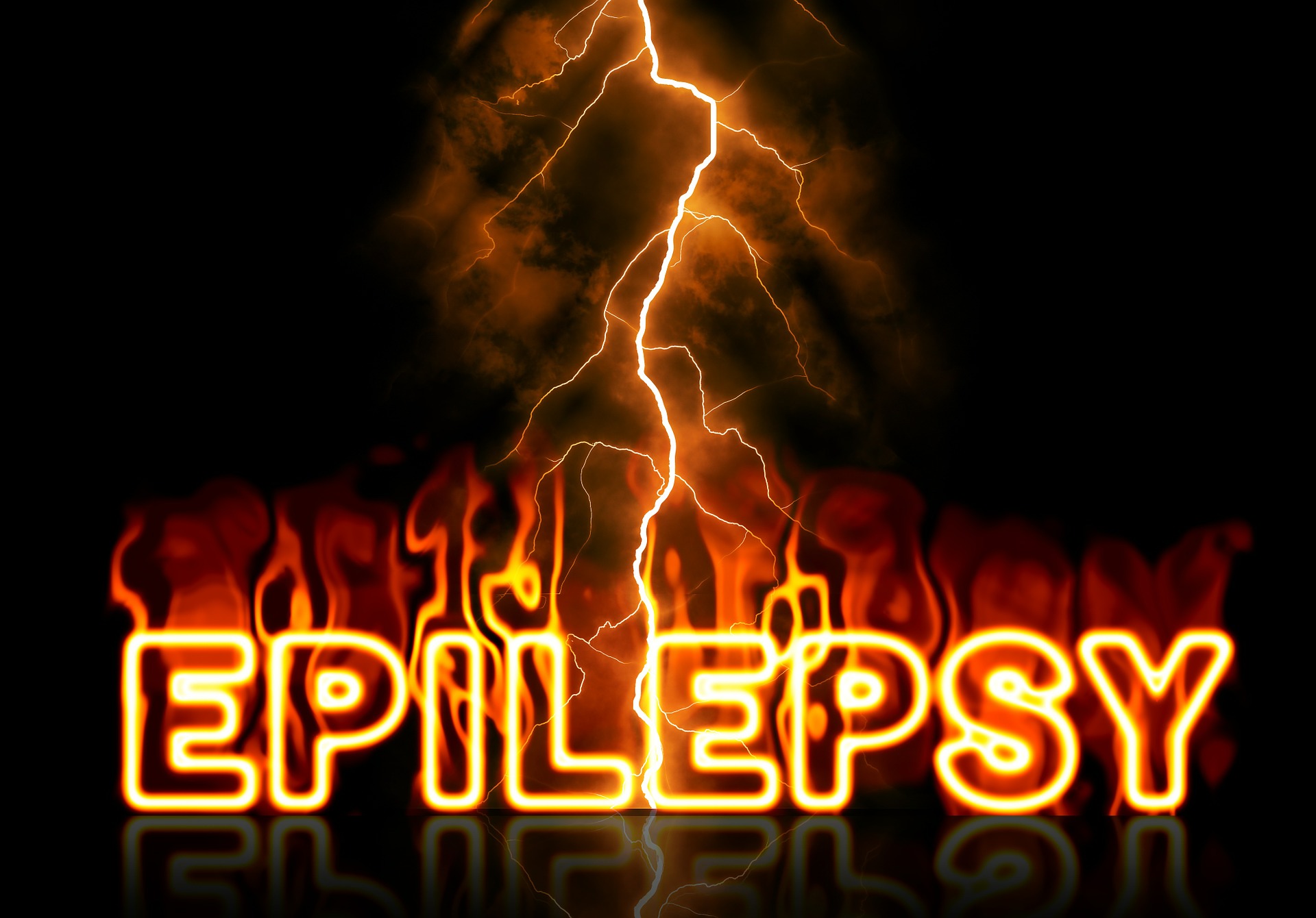The 21st chapter of Madhava Nidana deals with Apasmara which is epilepsy. Epilepsy is a central nervous system (neurological) disorder in which brain activity becomes abnormal, causing seizures or periods of unusual behavior, sensations and sometimes loss of awareness.

Causes of Apasmara —
चिन्ता – शोकादिभिर्दोषाः क्रुद्धा ह्रुत्स्रोतसि स्थिताः |
कृत्वा स्मृतेरपध्वंसपस्मारं प्रकुर्वते ||
तमः प्रवेशः संरम्भो दोषोद्रेकहतस्मृतेः |
अपस्मार इति ज्ञेयो गदो घोरश्चतुर्विधः || १||
cintā – śōkādibhirdōṣāḥ kruddhā hrutsrōtasi sthitāḥ |
kr̥tvā smr̥tērapadhvansapasmāraṁ prakurvatē ||
tamaḥ pravēśaḥ sanrambhō dōṣōdrēkahatasmr̥tēḥ |
apasmāra iti jñēyō gadō ghōraścaturvidhaḥ || 1||
The doshas having become vitiated by worry, grief and the like, get lodged in the channels of the mind, destroy the memory and cause epilepsy (apasmara). Feeling of entering into darkness, convulsions/ fits and loss of memory (and sensation) are present in this disease. This dreaded disease if of four varieties. 1
Prodromal features of apasmara —
ह्रुत्कंपः शून्यता स्वेदो ध्यानं मूर्च्छा प्रमूढता |
निद्रानाशश्च तस्मिंश्च भविष्यति भवत्यथ || २ ||
hrutkampaḥ śūnyatā svēdō dhyānaṁ mūrcchā pramūḍhatā |
nidrānāśaśca tasminśca bhaviṣyati bhavatyatha || 2 ||
The prodromal features are –
- Hrut Kampa — Palpitation
- Shunyata — A sensation of vaccum (or emptiness)
- Sveda — Sweating
- Murchha — Fainting
- Pramudha — Dullness of the senses
- Nidra nasha — Insomnia
Vata Type of Apasmara —
कम्पते प्रदेशद्दन्तान् फेनोद्वामी श्वसित्यपि |
परुषारुण – कृष्णानि पश्येद्रुपाणि चानिलात् || ३ ||
kampatē pradēśaddantān phēnōdvāmī śvasityapi |
paruṣāruṇa – kr̥ṣṇāni paśyēdrupāṇi cānilāt || 3 ||
The symptoms of Vataja Apasmara are reflected in such features as –
- Kampana — Tremors
- Convulsions
- Grinding of teeth
- Phenaat Vami — Frothy vomiting and
- Ati shvasa — Excessive respiration
- Parusha — Roughness of the body
- Krshna Pasyed rupaani — Seeing things that are hard, red and black. 3
Pitta type of Apasmara –
पीतफेनाङ्ग वक्त्राक्षः पीतासृग्रूपदर्शनः |
सतृष्णोष्णानलव्याप्तलोकदर्शी च पैत्तिकः || ४ ||
pītaphēnāṅga vaktrākṣaḥ pītāsr̥grūpadarśanaḥ |
satr̥ṣṇōṣṇānalavyāptalōkadarśī ca paittikaḥ || 4 ||
The patient suffering from pitta variety type of apasmara has
- A yellowish froth coming from his mouth
- His body, face and eyes turn yellowish.
- He sees his surroundings and people in yellow, and
- Red as consumed by fire while he continues to suffer from thirst and feeling of excessive heat. 4
Kapha Type of Apasmara –
शुक्लफेनाङ्ग – वक्त्राक्षः शीतहृष्टाङ्गजो गुरुः |
पश्येच्छुक्लानि रूपाणि श्लेष्मिको मुच्यते चिरात् || ५ ||
śuklaphēnāṅga – vaktrākṣaḥ śītahr̥ṣṭāṅgajō guruḥ |
paśyēcchuklāni rūpāṇi ślēṣmikō mucyatē cirāt || 5 ||
The features of Kaphaja Apasmara include a
- Whitish froth at the mouth
- White colour of the skin, face and eyes
- Feeling of cold
- Horripilation
- Feeling of heaviness in the body
- Seeing everything in white colour.
- After a round of fit, he regains consciousness after a long time. 5
Sannipata type of Apasmara –
सर्वैर्रतैः समस्तैश्च लिङ्गैर्ज्ञेयस्त्रिदोषजः |
अपस्मारः स चासध्यो यः क्षीणस्यानवश्च यः || ६ ||
sarvairrataiḥ samastaiśca liṅgairjñēyastridōṣajaḥ |
apasmāraḥ sa cāsadhyō yaḥ kṣīṇasyānavaśca yaḥ || 6 ||
Epilepsy due to vitiation of all the three doshas combined is characterized by features of the above three vitiated humours combined. It is incurable if found in a person who is emaciated and if the disease gets chronic. 6
प्रतिस्फुरन्तं बहुशः क्षीणं प्रचलितभ्रुवम् |
नेत्राभ्यां च विकुर्वाणमपस्मारो विनाशयेत् || ७ ||
pratisphurantaṁ bahuśaḥ kṣīṇaṁ pracalitabhruvam |
nētrābhyāṁ ca vikurvāṇamapasmārō vināśayēt || 7 ||
If an epileptic is associated with too much of tremors (convulsions) and emaciation and has violent convulsions and when the eyebrows of the patient move frequently and his eyes are twisted, the epilepsy would turn fatal. 7
Periodicity of the bouts of Apasmara (periodicity of epileptic attacks) –
पक्षाद्वा द्वादशाहाद्वा मासाद्वा कुपिता मलाः |
अपस्मराय कुर्वन्ति वेगं किञ्चिदथान्तरम् || ८ ||
pakṣādvā dvādaśāhādvā māsādvā kupitā malāḥ |
apasmarāya kurvanti vēgaṁ kiñcidathāntaram || 8 ||
The doshas get provoked (regularly) on 5, 12 or 30 day intervals and generate episodes of Apasmara or eplileptic seizures. Apasmara sometimes occurs even on days apart from these intervals. 8
देवे वर्षत्यपि यथा भूमौ बीजानि कानिचित् |
शरदि प्रतिरोहन्ति तथा व्याधिसमुच्छ्रयाः || ९ ||
dēvē varṣatyapi yathā bhūmau bījāni kānicit |
śaradi pratirōhanti tathā vyādhisamucchrayāḥ || 9 ||
Though some seeds are kept in the earth during the rainy season, they sprout during the Sharat or winter season that is the fruiting time of that particular seed. In the same manner though the disease – creating etiology etc. are there, the disease develops only after a certain period. 9
इति श्रीमाधवकरविरचिते माधवनिदाने अपस्मारनिदानं समाप्तम् ||21 ||
iti śrīmādhavakaraviracitē mādhavanidānē apasmāranidānaṁ samāptam ||21 ||
Thus concludes the Chapter on Apasmara.
Source —
Hello!!
I’m Dr. Malini Bhat MD (Ayu); an Ayurvedic Doctor and a health blogger. Follow me on social media to get daily health tips which you can easily adapt to a healthy lifestyle.